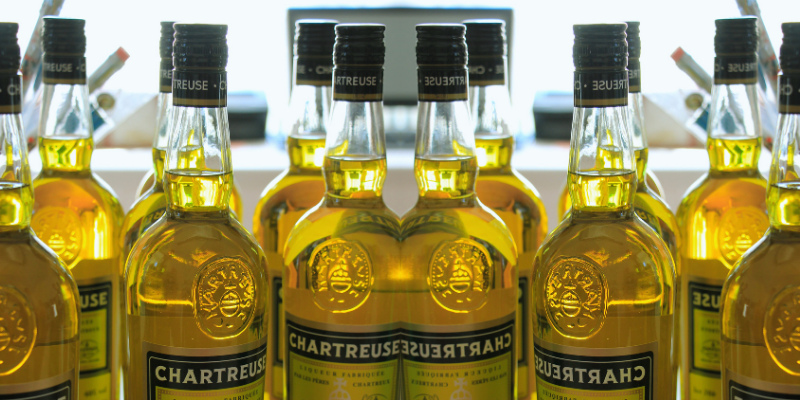In mid-January, the company that distributes Chartreuse, a French liqueur produced by Carthusian monks in the south of France from a complex recipe dating back to 1605, sent a letter to its distributors. He informed that the monks had decided not to increase the production of the liqueur – which is used in some rather popular cocktails among enthusiasts, such as the Last Word, and is also drunk neat – despite the strong international demand “to concentrate on one’s main objective : to protect one’s monastic life and dedicate one’s time to silence and prayer”.
The Carthusians are one of the most rigorous orders of the Catholic Church, small groups of men who choose a silent life as hermits: the first institute of Carthusians was founded in 1084 by the Catholic saint San Bruno in the French region of Isère, and is called the Monastery of Great Chartreuse. The recipe for what would become the Chartreuse liqueur came to them in 1605 from an artillery marshal of the French king Henry IV, François Hannibal d’Estrées, who presented it to the monks saying he had created an “elixir of life”. The original recipe – which includes 130 herbs, plants, flowers and other unknown ingredients – was improved by the monks during the seventeenth century and put on sale starting in 1764, under the name of “Élixir végétal de la Grande-Chartreuse”.
The recipes of the two main versions that are on the market today, the Certosa Verde (which is more delicate and has such a recognizable color that it gives its name to a shade, the “Certosa green”) and the Certosa Gialla (sweeter), were developed in about 1840.
Since it is created with dozens of different natural ingredients – including gentian, genepì, fennel, lemon verbena, star anise, angelica and cumin – the taste of Chartreuse changes over time, and some particularly old bottles are very expensive. Its taste is unique, but it vaguely resembles that of Italian liqueurs such as Strega or Galliano.
The recipe has survived many historical vicissitudes which repeatedly led the monastic order to be exiled from France or to have to flee the monastery due to wars, evictions and natural disasters. Today the liqueurs are produced using the blend of herbs prepared by the few monks of the Grande Chartreuse who are aware of the secret recipe, while the bottling, packaging, marketing and work of the distillery are managed by the Chartreuse Diffusion company, created in 1970.
In recent decades, Chartreuse has become a popular ingredient for cocktails with sweet and sour or herbaceous components. The most famous is the Last Word, which is obtained by mixing equal parts gin, lime juice, maraschino liqueur and Chartreuse. This French liqueur also enjoys a certain notoriety in pop culture: the singer Bruce Springsteen writes in his biography that he loves it, the writer Amélie Nothomb makes characters in her novels drink it, both Frank Zappa and Tom Waits have mentioned it in some songs . In French ski resorts it is often served together with hot chocolate, forming a drink they call Verte Chaud, “hot green”.
It has been some time since the specialized sites that deal with the cocktail and liqueur market have pointed out that, especially in the United States, the Chartreuse (which in Italy is also known as Certosa) has become much more difficult to find than usual , And some bartenders they said also that they had to modify their recipes because finding this ingredient has become too complex. Large US retailers such as Total Wine have been informing their customers for months that “this product cannot be added to the cart, because it is out of stock”.
The January letter finally offers an explanation for this deficiency. Inside, the company that distributes Chartreuse globally says that «the monks no longer want to produce the liqueur on a scale greater than that necessary to economically support their order. Creating millions of cases of Chartreuse makes no sense in the environmental context we are in today, and would have a negative impact on the planet in the very short term.” The company said it will continue to distribute the product first of all in the domestic market – therefore in France – and to maintain “a useful presence” in its most strategic markets: North America, Europe, Asia and Oceania.
